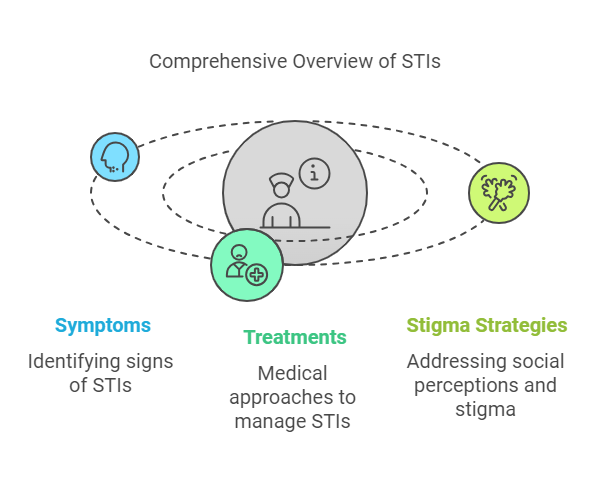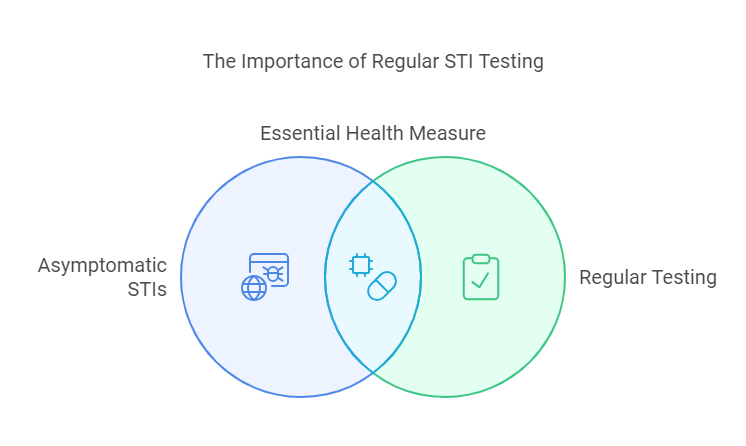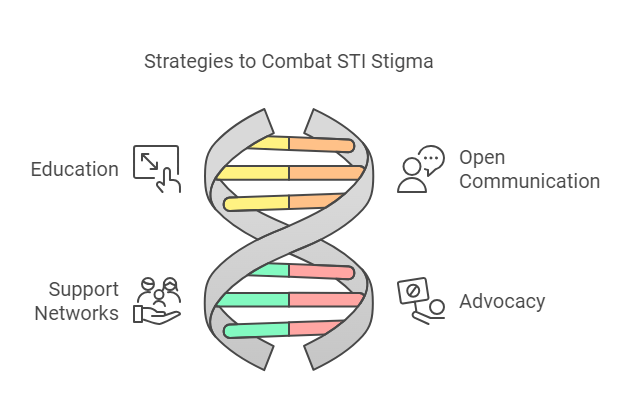No products in the cart.
No products in the cart.
Sexually Transmitted Infections (STIs) are a significant public health concern that affects millions of individuals worldwide. This document aims to provide a comprehensive overview of STIs, including their symptoms, available treatments, and strategies for addressing the stigma associated with these infections. By increasing awareness and understanding, we can promote better health practices and support those affected by STIs.
Here are the latest STI statistics in the UK:
These statistics are based on the 2023 report from the UK Health Security Agency ¹.

STIs can manifest in various ways, and symptoms may differ depending on the type of infection. Some common symptoms include:
It is essential to note that many STIs can be asymptomatic, making regular testing crucial for sexually active individuals.

The treatment for STIs varies depending on the specific infection. Here are some common treatments:
Regular screenings and prompt treatment are vital for preventing complications and reducing the spread of STIs.
The stigma surrounding STIs can lead to feelings of shame, isolation, and reluctance to seek treatment. Here are some strategies to combat this stigma:
By addressing the stigma associated with STIs, we can create a more supportive environment for those affected and encourage proactive health behaviours.

What to do if you think you have a Sexually Transmitted Infection
If you suspect that you may have an STI, there are a few important steps you should take:
1. Get Tested: The first and most essential step is to get tested. Several clinics and healthcare providers offer confidential STI testing. Whether you have symptoms or not, if you’ve been sexually active and have reason to believe you might have been exposed to an STI, getting tested is critical.
2. Seek Medical Help: If the test comes back positive, the next step is to seek immediate medical attention. Reach out to a healthcare professional who can provide guidance on the necessary steps for treatment.
3. Communicate with your partner(s): It can be difficult, but it’s essential to inform your current and past partners who might have been exposed. They need to be aware so they can also get tested and, if necessary, treated.
4. Follow the treatment plan: Some STIs are treatable, while others can only be managed. It’s crucial to adhere to the treatment plan given by your healthcare provider. This may include taking medication as prescribed and attending all follow-up appointments.
5. Practice Safe Sex: Always practice safe sex to prevent further spread of the STI. This includes using barriers like condoms or dental dams and discussing STI statuses with future partners.
Remember, it’s normal to feel scared or anxious, but with prompt action and proper medical care, most STIs can be managed effectively.
STIs are a common health issue that requires awareness, understanding, and compassion. By recognizing the symptoms, seeking appropriate treatments, and addressing the stigma, we can foster a healthier society. Regular testing and open conversations about sexual health are essential steps in promoting well-being and reducing the impact of STIs on individuals and communities.
If you need any further information or assistance with this article, don’t hesitate to Contact Us
The content of this post is provided for informational purposes only. It is essential to consult with a qualified healthcare professional before making any decisions regarding your health or wellness. The author is not a licensed medical professional, and this information should not be considered medical advice.
The content of this post is provided for informational purposes only. It is essential to consult with a qualified healthcare professional before making any decisions regarding your health or wellness. The author is not a licensed medical professional, and this information should not be considered medical advice.
Karen Blake
BAHN-NLP
TFT-DX



